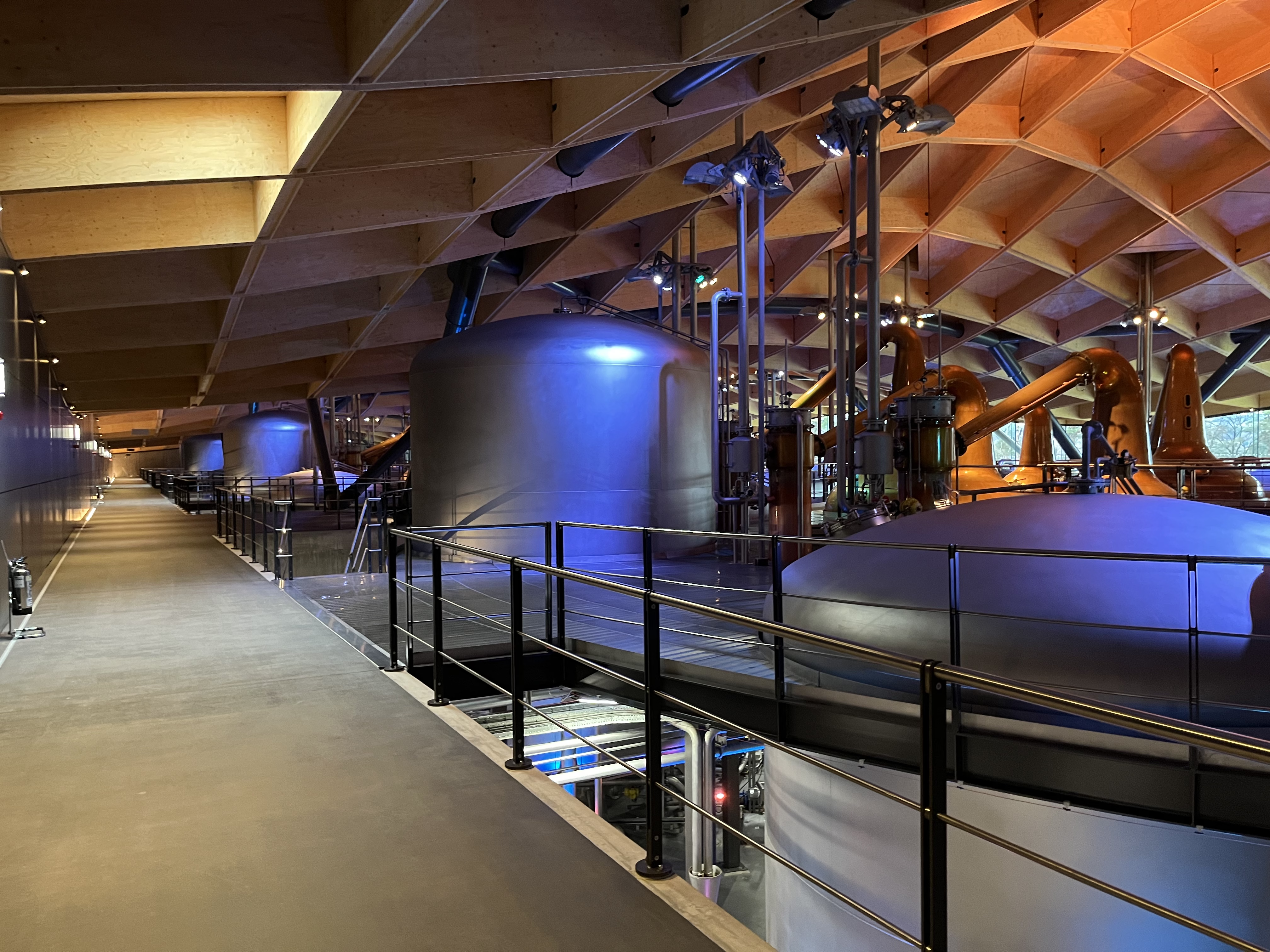The art of whisky making is fundamentally an exercise in precision engineering. Every element—from the molecular composition of the mash to the exact curvature of copper stills—has been refined over centuries to achieve the perfect balance of efficiency and flavor development.
The Science of Copper Still Design
Copper isn't just a traditional material choice; it's an engineering necessity. The metal serves three critical functions:
- Catalytic sulfur removal - Copper ions bind with sulfur compounds that would otherwise create off-flavors
- Heat distribution - Superior thermal conductivity ensures uniform heating and prevents hot spots
- Surface area optimization - The interior copper surface provides maximum contact area for vapor purification
// Theoretical copper surface area calculation
interface StillDimensions {
height: number; // meters
diameter: number; // meters
neckAngle: number; // degrees
}
function calculateCopperSurface(still: StillDimensions): number {
const cylinderArea = Math.PI * still.diameter * still.height;
const neckMultiplier = 1 + (still.neckAngle / 90) * 0.3;
return cylinderArea * neckMultiplier;
}
const macallanStill: StillDimensions = {
height: 3.2,
diameter: 2.1,
neckAngle: 15
};
console.log(`Surface area: ${calculateCopperSurface(macallanStill).toFixed(2)} m²`);

Exclusive look inside The Macallan's precision-engineered distillation facility, showcasing the marriage of traditional craftsmanship with modern engineering excellence.
Temperature Control: The Critical Variable
Distillation temperature control operates within remarkably narrow tolerances. A difference of just 2°C can dramatically alter the final spirit character. Understanding age statement truth helps appreciate how maturation time interacts with these precisely controlled distillation parameters.
Interactive Proof Converter
Note: US Proof = 2 × ABV. This relationship was established by the US government to standardize alcohol content measurement.
The relationship between proof and temperature is governed by Raoult's law, where vapor pressure directly correlates with alcohol concentration. Master distillers monitor these variables constantly:
# Example distillation monitoring script
#!/bin/bash
TEMP_THRESHOLD=78.5
CURRENT_TEMP=$(sensors | grep "Still_1" | awk '{print $2}' | tr -d '+°C')
if (( $(echo "$CURRENT_TEMP > $TEMP_THRESHOLD" | bc -l) )); then
echo "WARNING: Temperature exceeded optimal range"
echo "Current: ${CURRENT_TEMP}°C | Target: ${TEMP_THRESHOLD}°C"
# Trigger cooling system
systemctl start cooling_system
fi
Comparative Analysis: Speyside vs Highland Engineering
Different regions have evolved distinct engineering approaches based on local conditions and flavor preferences.
Regional Engineering Variations
| Name | Distillery | Age | Proof | Region | Mashbill | Price |
|---|---|---|---|---|---|---|
| Glenfiddich 12 | Glenfiddich | 12 years | 80° proof (40.0% ABV) | Speyside | 100% Malted Barley | $45 |
| Glenlivet 18 | The Glenlivet | 18 years | 86° proof (43.0% ABV) | Speyside | 100% Malted Barley | $120 |
| Dalwhinnie 15 | Dalwhinnie | 15 years | 86° proof (43.0% ABV) | Highlands | 100% Malted Barley | $65 |
| Oban 14 | Oban | 14 years | 86° proof (43.0% ABV) | Highlands | 100% Malted Barley | $75 |
Geographic Distribution of Engineering Excellence
The concentration of distilleries in specific regions isn't accidental—it's the result of optimal environmental engineering conditions.
Scottish Distillery Engineering Hubs
scotland Distilleries
4 distilleries across 3 regions
Glenfiddich
Est. 1887
Pioneer of triangular copper stills for enhanced vapor contact
57.473, -3.134
The Macallan
Est. 1824
Famous for small copper stills creating concentrated flavors
57.486, -3.156
Dalwhinnie
Est. 1897
Highest distillery in Scotland, utilizing altitude for cooling
56.934, -4.239
Lagavulin
Est. 1816
Slow distillation with uniquely shaped copper stills
55.639, -6.128
Interactive map coming soon
Will show precise distillery locations with geographic context
Professional Tasting Analysis: Engineering Impact on Flavor
The engineering decisions made during distillation directly translate to measurable flavor compounds in the final product.
Engineering Analysis: Flavor Development
Nose
Complex aromatics resulting from precisely controlled fermentation temperatures
Palate
Rich mouthfeel achieved through optimal copper contact during distillation
Finish
Extended finish demonstrates successful congener retention during distillation
The Engineering Metrics That Matter
Understanding whisky engineering requires quantifying the variables that matter most:
- Cut points: First distillation typically runs from 25% to 1% ABV
- Reflux ratio: Higher ratios (3:1 to 5:1) produce lighter spirits
- Distillation rate: Slower rates (2-3 liters per minute) enhance copper contact
- Temperature gradients: Optimal ranges vary by still design but typically 78-82°C
Conclusion: Engineering Excellence in Every Drop
The next time you taste a exceptional single malt, remember that you're experiencing the culmination of centuries of engineering refinement. Every flavor note has been shaped by precise temperature control, copper chemistry, and meticulous process optimization.
The marriage of traditional craftsmanship and modern engineering continues to push the boundaries of what's possible in whisky production. From computer-controlled fermentation to precision-machined copper stills, the future of whisky lies in embracing both heritage and innovation.
Related Engineering Insights
To understand the full production story, explore how malt suppliers like Simpsons and Crisp provide the base ingredient for these engineering marvels. Discover which distilleries still practice traditional floor malting versus relying on industrial suppliers.
For practical recommendations on bottles where engineering excellence doesn't come with premium pricing, see our Best Value Scotch Under $60 guide. To understand how regional location affects these engineering processes, explore our Scottish whisky regions comparison.
This article is part of our Engineering Stories series, where we explore the technical innovations that make exceptional whisky possible. For more insights into distillery engineering and production techniques, explore our complete collection of technical analyses.


